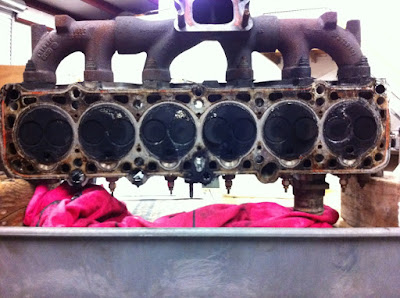I then began studying the chassis wiring diagram for the car so that I could check continuity of the wire connecting the fuel gauge to the sending unit. I discovered something very strange:
 |
| Check out number 182 & 250. The sending units are wired in series. |
 |
| Upper, trunk located tank. |
 |
| Notice the large "T" hose that connects the filler neck to both of the tanks. The second sending unit is just to the right of the large hose. |
I tested the rheostat with a multimeter before reassembling it. The resistance to ground gradually increased as the float level increased.
I put the sending unit back in the tank, and now I have a working fuel gauge. Praise Jesus!





























